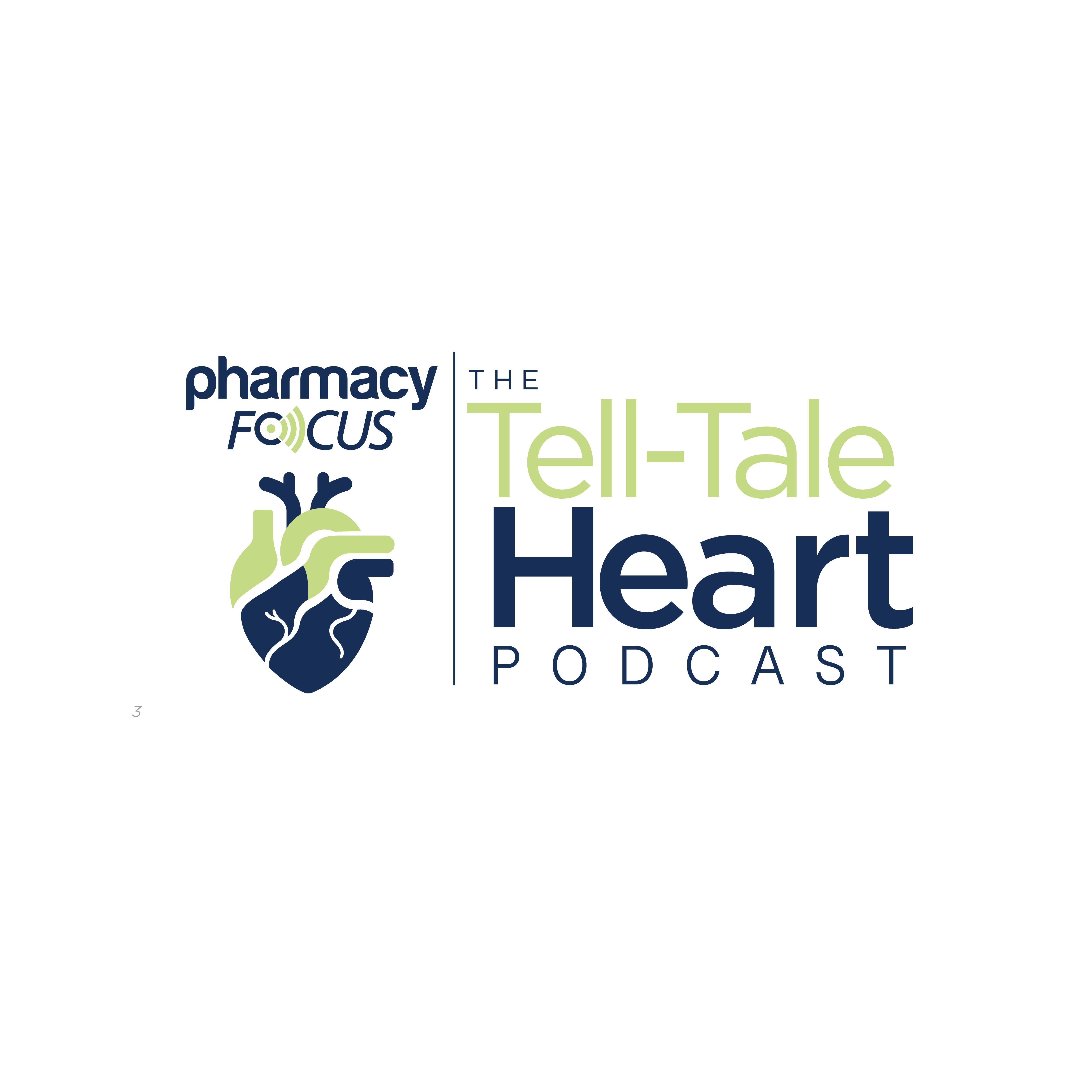
Publication
Article
Pharmacy Practice in Focus: Health Systems
Enhancing Patient Care in Heart Failure–Related Anemia Through Improved Communication, Monitoring, and Education
Author(s):
Key Takeaways
- Iron deficiency in heart failure is defined by specific ferritin and TSAT levels, with prevalence increasing in acute exacerbations.
- IV iron therapy, especially ferric carboxymaltose, improves functional status and reduces hospitalizations, despite challenges like adverse effects and formulary issues.
- Pharmacists are crucial in managing heart failure-related anemia through communication, monitoring, and education, considering individual patient factors and evolving guidelines.
Pharmacists can optimize management of this condition with intravenous iron therapy guidance.
Although ensuring medication adherence and implementing intravenous (IV) iron therapy remain significant challenges, pharmacists can enhance care for patients with heart failure–related anemia by providing improved intrateam communication, closely monitoring patients, and providing patient education. According to guidelines from the European Society of Cardiology (ESC), American College of Cardiology (ACC), and American Heart Association (AHA), iron deficiency is defined as a serum ferritin level of less than 100 μg/L or between 100 and 300 μg/L with a transferrin saturation (TSAT) of less than 20%.1
Image credit: lovelyday12 | stock.adobe.com

During a Pharmacy Times® Clinical Forum in Chicago, Illinois, moderator Francesco Ferrante, PharmD, a clinical cardiology pharmacist at Northwestern Medicine, noted some differences in definitions. For instance, the ESC also considers serum ferritin below 100 ng/mL or levels between 100 and 299 with a TSAT less than 20%.2
“We’re starting to see some observational studies that show that serum iron concentration and TSAT may actually be more closely linked to prognosis rather than purely serum ferritin alone,” Ferrante said during the event. “This may be a better indicator of patients who are truly iron deficient who may benefit from therapies.”
Iron deficiency can be classified as absolute iron deficiency (ferritin < 100 ng/mL) or functional iron deficiency (ferritin 100-300 ng/mL with TSAT < 20%). Absolute iron deficiency is characterized by depletion of iron stores due to low intake, poor absorption, increased demand, or chronic hemorrhage, whereas functional iron deficiency is caused by impaired mobilization of stored iron due to inflammation and elevated hepcidin levels.3
Among patients with heart failure, the prevalence of iron deficiency is approximately 50%, although it increases to 80% in acute heart failure exacerbations, and higher rates are observed in New York Heart Association (NYHA) class 3 and 4.1 Iron deficiency anemia occurs in approximately 30% of stable heart failure patients and escalates to 50% among those who are hospitalized, contrasting sharply with less than 10% prevalence in the general population.1
The panelists agreed that their protocols can vary when deciding which patients are eligible for IV iron therapy, although most said their upper limit for comfort would be patients with ferritin levels at or above approximately 500 μg/L. Panelist Christine Cunningham, PharmD, BCCP, a cardiology clinical pharmacist at Northwestern Memorial Hospital, explained that in some cases, ferritin levels can be falsely elevated, such as in patients with low TSAT and iron stores. In such cases, she said she leans toward continuing with IV iron treatment.
Ferrante said he has noticed a decrease in patients using oral iron, particularly among those on warfarin therapy who are at high risk for gastrointestinal bleeding. Although he noted that the IRONOUT-HF trial (NCT04080908) did not demonstrate clinical benefit, other studies have shown that oral iron may still be useful, especially when higher doses are not suitable. Therefore, Ferrante said he is still willing to use oral iron in his practice, emphasizing that, “something may be better than nothing.”
The treatment landscape for anemia has changed significantly in recent years, with multiple trials supporting the use of ferric carboxymaltose (FCM) injection (Injectafer; Daiichi Sankyo). For instance, the CONFIRM-HF trial (NCT02026635) administered IV FCM in doses ranging from 500 to 2000 mg at various intervals. Data showed significant improvement in the 6-minute walk test and reduced hospitalizations for worsening heart failure, with no severe adverse reactions reported.4 Furthermore, the FERRIC-HF trial (NCT00125996) compared 200 mg IV FCM weekly vs placebo in 304 patients and found a statistically significant improvement in NYHA functional status. Specifically, 47% of patients who received FCM showed improvement vs 30% in the placebo group, and self-reported scores were also significantly better in the FCM arm.5
In the AFFIRM trial (NCT00000556), investigators focused on cardiovascular death and hospital admissions, differentiating patient outcomes based on hemoglobin levels. Investigators found a similar adverse effect rate with FCM compared to placebo.6 Further, the IRONMAN trial (NCT02642562) showed a statistically significant decrease in composite outcomes of cardiovascular death and hospital admissions compared with usual care.7
Taken together, these data and current guidelines suggest IV iron supplementation for symptomatic individuals with iron deficiency in heart failure, according to the panelists. Ferrante noted that ESC guidelines specify particular formulations such as FCM or ferric derisomaltose, whereas AHA/ACC/Heart Failure Society of America guidelines recommend screening without specific suggestions regarding IV formulations. Oral iron supplementation is generally not recommended for patients with heart failure because of poor absorption.1,2
However, IV formulations have their own challenges, according to the panelists. For instance, clinicians have debated the benefits of high-dose IV iron vs multidose regimens. Although high-dose IV iron is generally favored, potential disadvantages include infusion site reactions and the risk of hypophosphatemia, which can arise from increased FGF23 receptor activity leading to excessive phosphate excretion in the kidneys. Formulary challenges are also common for clinicians looking to use high-dose IV iron.
“We just institutionally have had a lot of reticence to add the high-dose formulations to formulary, particularly ones that are 2-dose strategies that are very expensive on the inpatient side and that potentially could be cost-generating on the outpatient side,” said panelist Sajni Patel, PharmD, BCCP, clinical pharmacy coordinator of cardiology services at UChicago Medicine. “I can only really speak to the iron sucrose [200 mg every 48 hours for] 5 doses and hope that they stay there for 10 days. A lot of times, we just don’t get all the doses in, so then it’s a lot of coordination on the outpatient side, hoping that you can get the patient their drug and that it’s paid for, and that they can get an infusion chair and that all of it works out when they’re passed off to somebody else.”
Panelist Andrew Johnson, PharmD, clinical pharmacist specialist in cardiology at UChicago Medicine, noted that the pharmacist on the inpatient team typically coordinates those handoffs and dose changes.
“It’s usually the pharmacist on the inpatient team on the day of discharge, which unfortunately can be a large burden because you’re trying to coordinate [everything] within a specific time window before [the patient] leaves the hospital while you’re taking care of everybody else,” Johnson said. “Unfortunately, our providers aren’t putting in the referrals, don’t know how to dose it, so…you have to hold their hand through it.”
Patient monitoring is crucial and is a key area where pharmacists are needed. For instance, for patients who may be at risk of iron overload, pharmacists are particularly qualified to consider their entire care plan when making dosing decisions. Panelist Alissa Shega, PharmD, BCCP, an inpatient cardiology pharmacist at UChicago Medicine, said she considers blood products that the patient may also be receiving. For each unit of red blood cells a patient receives, she subtracts 1 dose of iron.
“I do something similar in that gray area where you have an anemic patient who’s got some signs of active [infection] or you’re depleting blood products because their hemoglobin drops below a threshold for [coronary artery disease] with heart failure, for example,” Patel said. “In those folks, I tend to be a little more reticent to give them a full dose if their iron studies are borderline.”
Similarly, panelist Nicole Saccone, PharmD, a clinical pharmacy specialist at Advocate Aurora Health, said she closely monitors postoperative cardiac surgery patients and does not routinely administer IV iron to patients soon after surgery.
“I feel like we wait for them to get out of that acute phase, and then a lot of them come out with transfusion needs. Because of that, I stay away from [IV iron],” Saccone said. “So, most of the patients I’m [administering IV iron] in, it’s like a readmission after a cardiac surgery…and not like a routine [postoperative procedure].”
Although guidelines provide a framework for managing anemia in heart failure, the optimal approach requires individualized patient assessment. Factors such as ferritin and TSAT levels, the presence of inflammation, and the risk of gastrointestinal bleeding must be carefully considered when determining the most appropriate treatment, whether oral or IV iron. Recognizing the potential for falsely elevated ferritin levels and the limitations of oral iron in certain populations underscores the need for careful clinical judgment and a collaborative approach to patient care. Further research is needed to optimize treatment protocols and ensure that all patients with heart failure–related anemia receive the most effective and appropriate therapy.
Pharmacists play a crucial role in navigating all of these considerations and treatment decisions. By staying abreast of evolving guidelines and diagnostic criteria, such as the increasing importance of TSAT alongside ferritin levels, pharmacists can effectively identify and advocate for appropriate treatment strategies. Through improved intrateam communication, diligent patient monitoring, and comprehensive education, pharmacists can optimize medication adherence, facilitate timely IV iron therapy when indicated, and ultimately improve outcomes for this patient population.
REFERENCES
1. Heidenreich PA, Bozkurt B, Aguilar D, et al. 2022 AHA/ACC/HFSA guideline for the management of heart failure: executive summary: a report of the American College of Cardiology/American Heart Association Joint Committee on Clinical Practice Guidelines. Circulation. 2022;145(18):e876-e894. doi:10.1161/CIR.0000000000001062
2. Rizzo C, Carbonara R, Ruggieri R, Passantino A, Scrutinio D. Iron deficiency: a new target for patients with heart failure. Front Cardiovasc Med. 2021;8:709872. doi:10.3389/fcvm.2021.709872
3. Tawfik YMK, Billingsley H, Bhatt AS, et al. Absolute and functional iron deficiency in the US, 2017-2020. JAMA Netw Open. 2024;7(9):e2433126. doi:10.1001/jamanetworkopen.2024.33126
4. Ponikowski P, van Veldhuisen DJ, Comin-Colet J, et al. Beneficial effects of long-term intravenous iron therapy with ferric carboxymaltose in patients with symptomatic heart failure and iron deficiency. Eur Heart J. 2015;36(11):657-668. doi:10.1093/eurheartj/ehu385
5. Okonko DO, Grzeslo A, Witkowski T, et al. Effect of intravenous iron sucrose on exercise tolerance in anemia and nonanemia patients with symptomatic chronic heart failure and iron deficiency FERRIC-HF: a randomized, controlled, observer-blinded trial. J Am Coll Cardiol. 2008;51(2):103-112. doi:10.1016/j.jacc.2007.09.036
6. Ponikowski P, Kirwan BA, Anker SD, et al. Ferric carboxymaltose for iron deficiency at discharge after acute heart failure: a multicentre, double-blind, randomised, controlled trial. Lancet. 2020;396(10266):1895-1904. doi:10.1016/S0140-6736(20)32339-4
7. Kalra PR, Cleland JGF, Petrie MC, et al. Intravenous ferric derisomaltose in patients with heart failure and iron deficiency in the UK (IRONMAN): an investigator-initiated, prospective, randomised, open-label, blinded-endpoint trial. Lancet. 2022;400(10369):2199-2209. doi:10.1016/S0140-6736(22)02083-9

Newsletter
Stay informed on drug updates, treatment guidelines, and pharmacy practice trends—subscribe to Pharmacy Times for weekly clinical insights.
2 Commerce Drive
Cranbury, NJ 08512
All rights reserved.





